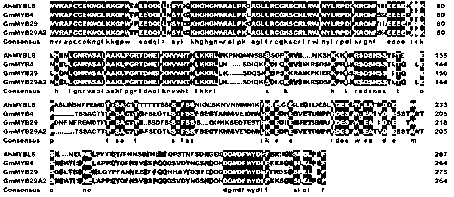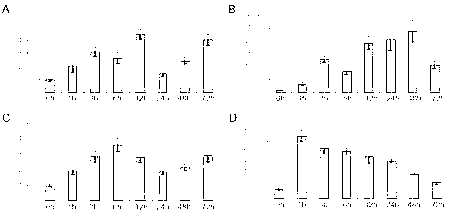Cloning and function expression method of adversity stress AhMYBL6 gene in peanut
A technology of adversity stress and cloning method, applied in the field of cloning and functional expression of peanut adversity stress AhMYBL6 gene
- Summary
- Abstract
- Description
- Claims
- Application Information
AI Technical Summary
Problems solved by technology
Method used
Image
Examples
Embodiment Construction
[0028] The concrete implementation process of the present invention is:
[0029] 1 Experimental materials and methods
[0030] 1.1 Experimental materials
[0031] The experimental material is Peanut Huayu 19 ( Arachis hypogaea L. cultivar Huayu19). Peanut seeds were germinated in a mixture of nutrient soil and vermiculite at a ratio of 2:1, and the growth conditions of seedlings after germination were 16h light / 8h dark (28°C / 22°C). Peanut seedlings grown for about 2 weeks at the three-leaf stage were used for subsequent abiotic stress treatment experiments.
PUM
 Login to View More
Login to View More Abstract
Description
Claims
Application Information
 Login to View More
Login to View More - R&D
- Intellectual Property
- Life Sciences
- Materials
- Tech Scout
- Unparalleled Data Quality
- Higher Quality Content
- 60% Fewer Hallucinations
Browse by: Latest US Patents, China's latest patents, Technical Efficacy Thesaurus, Application Domain, Technology Topic, Popular Technical Reports.
© 2025 PatSnap. All rights reserved.Legal|Privacy policy|Modern Slavery Act Transparency Statement|Sitemap|About US| Contact US: help@patsnap.com


